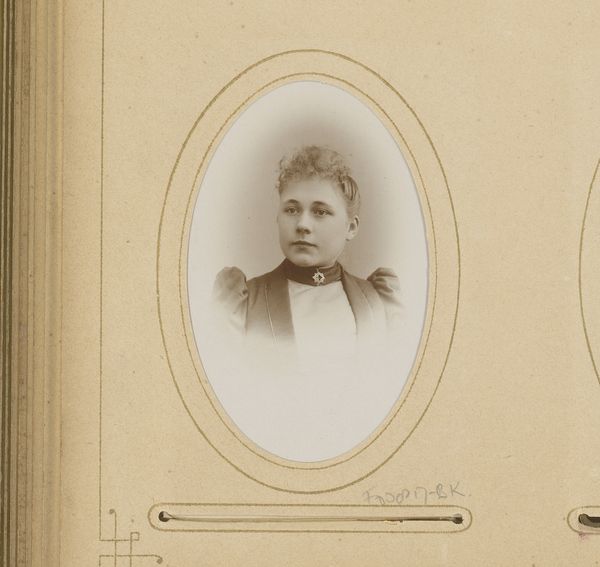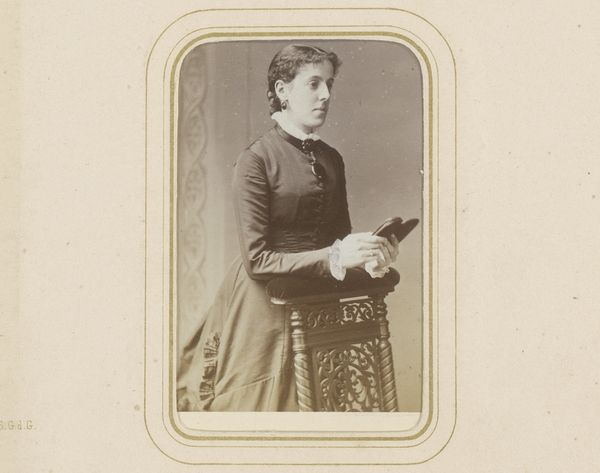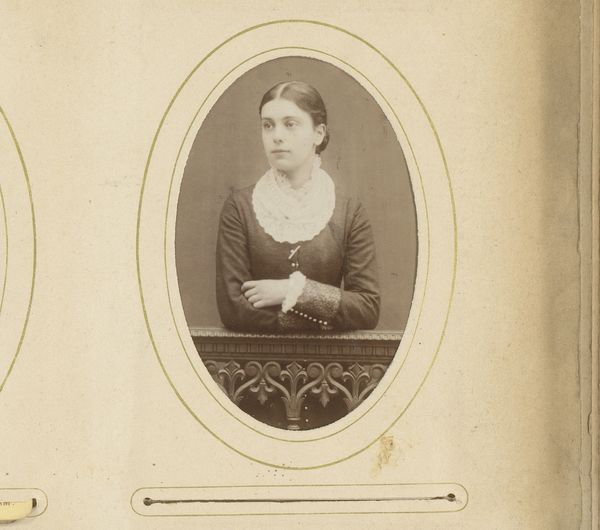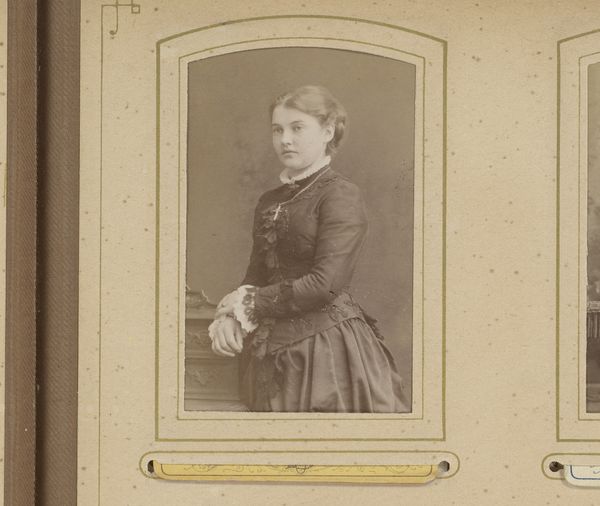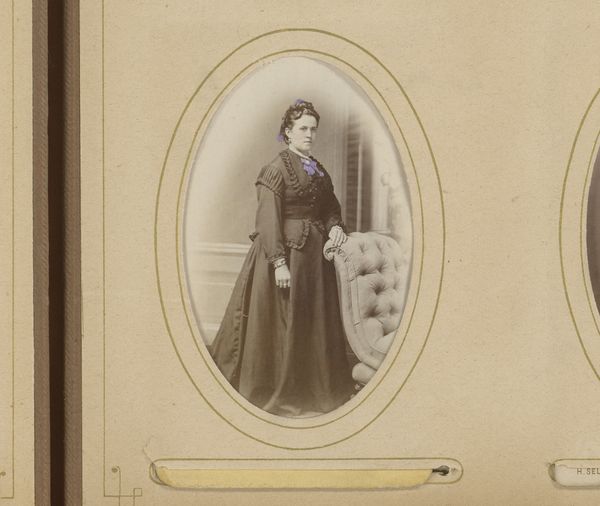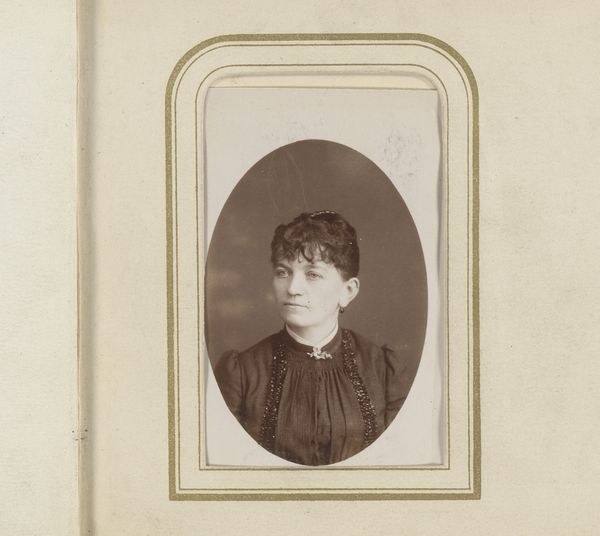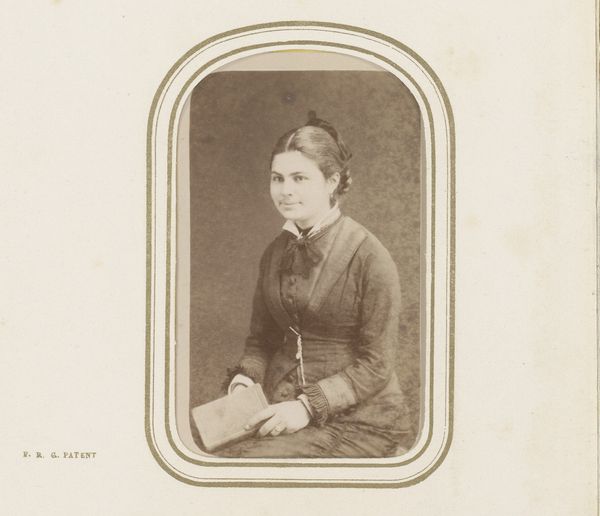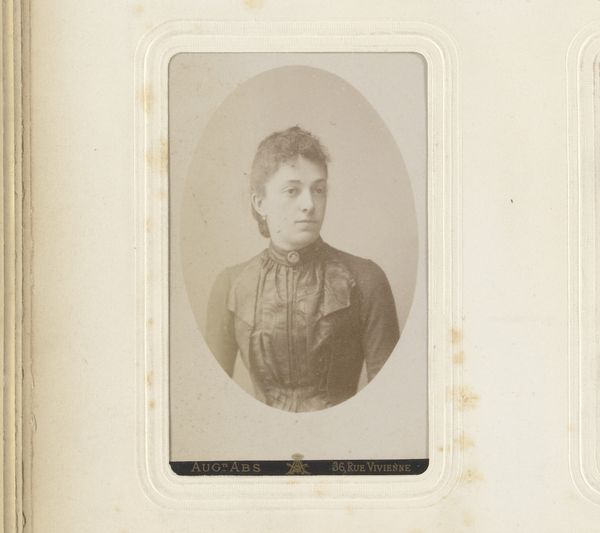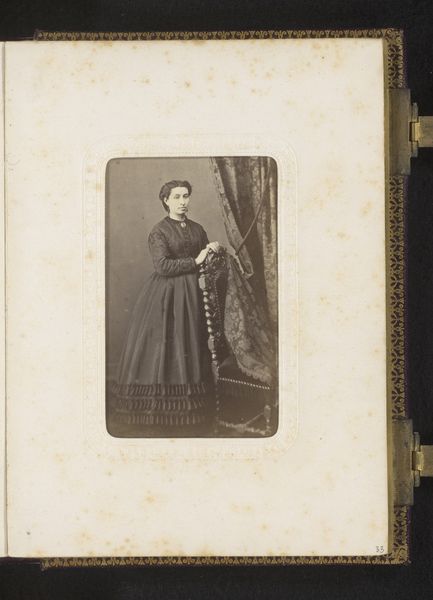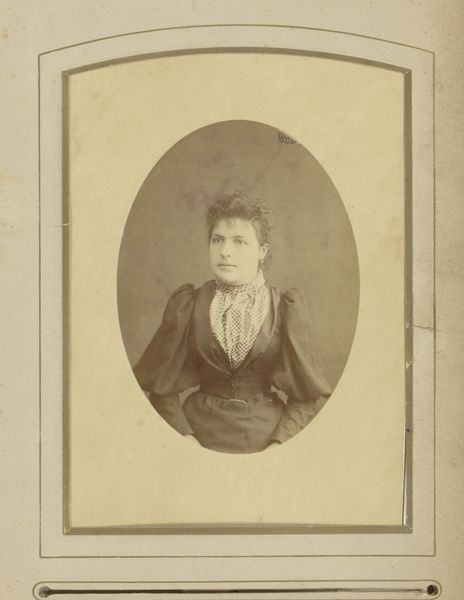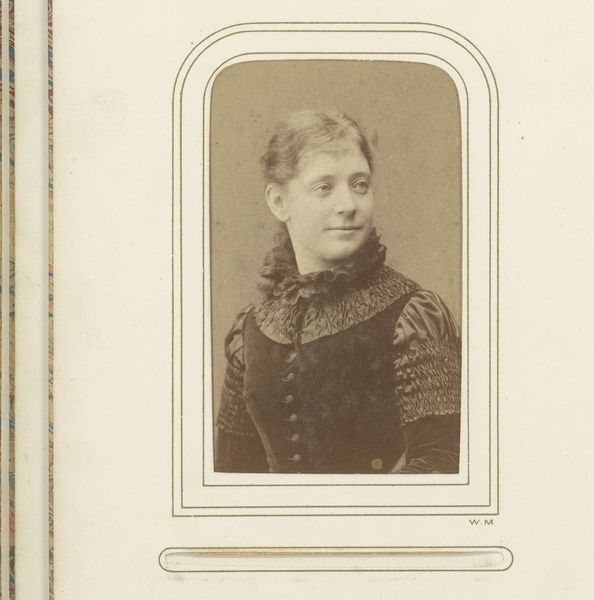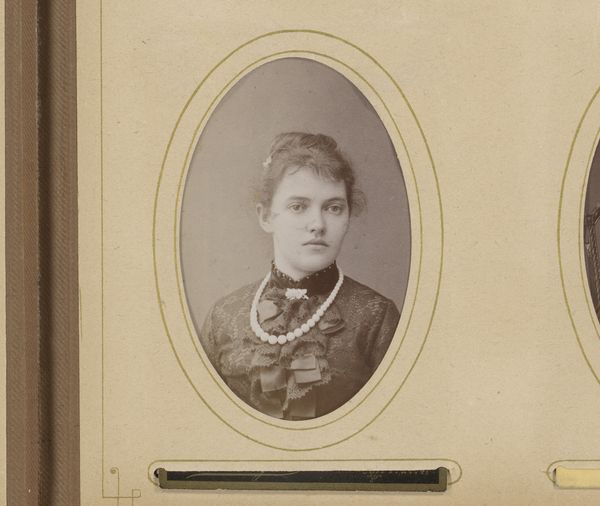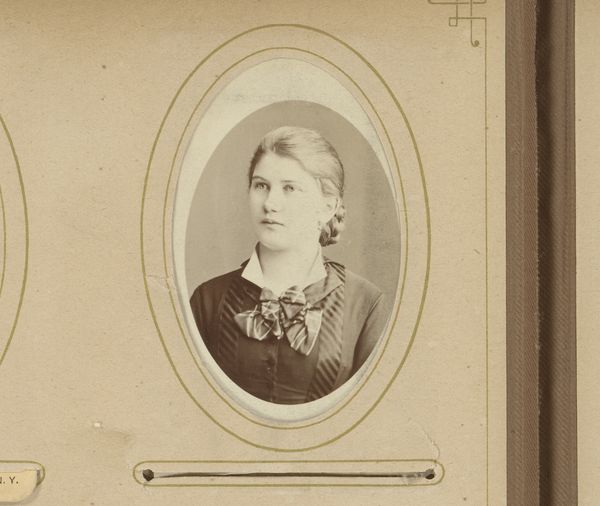
Dimensions: height 82 mm, width 51 mm
Copyright: Rijks Museum: Open Domain
Curator: Ah, yes, "Portret van een staande vrouw met waaier in de hand" by Theodor Wenzel, a striking photographic portrait likely captured between 1880 and 1920. Editor: My immediate impression is one of understated elegance. The sepia tones and the woman's simple dress lend it a quiet, almost melancholic feel. Curator: I agree. Considering the era, this image probably reflects the emerging role of women in society. Posed but assertive, holding a fan, hinting at a subtle, coded communication. What social strata do you think she belonged to? The clothing appears to have status value, although without flamboyance. Editor: Absolutely. The formality of her pose and the careful arrangement of elements within the oval frame highlight structure. The texture of her dress, set against the smoothness of her skin creates a dynamic tension. I can observe great value within this composition by only using its visuality and by omitting its social implications. Curator: Yes, but can we really detach from the social implications? Her outfit, though seemingly simple, would be a deliberate statement of societal and gender status. It is this balance, a sense of poised restriction within this representation that is so telling. Her demure countenance could conceal any number of subversions and social position. Editor: I appreciate the historical reading, but let's consider how the light falls across her face, drawing our eye upwards, creating a hierarchy of importance in the image itself. We can think of it as pure semiotics, of signifiers being strategically arranged and their significance. This goes well beyond a simple statement of gender or social standing. Curator: But can this artistic "choice" stand devoid of these contextual forces, though? Who controlled the setting, their vision, the gaze itself, is deeply rooted within society and politics. To interpret outside that risks neutralizing historical evidence, silencing critical voices, don't you agree? Editor: Maybe there is some truth to it, yet by decontextualizing it, a certain formal value can be appreciated, if one understands structure. Curator: Well, on this occasion I might admit to enjoying the photograph through your filter as well, to notice how its historical essence shapes and impacts those abstract principles you highlight so clearly! Editor: Then perhaps there can be an alignment between structure and context!
Comments
No comments
Be the first to comment and join the conversation on the ultimate creative platform.
